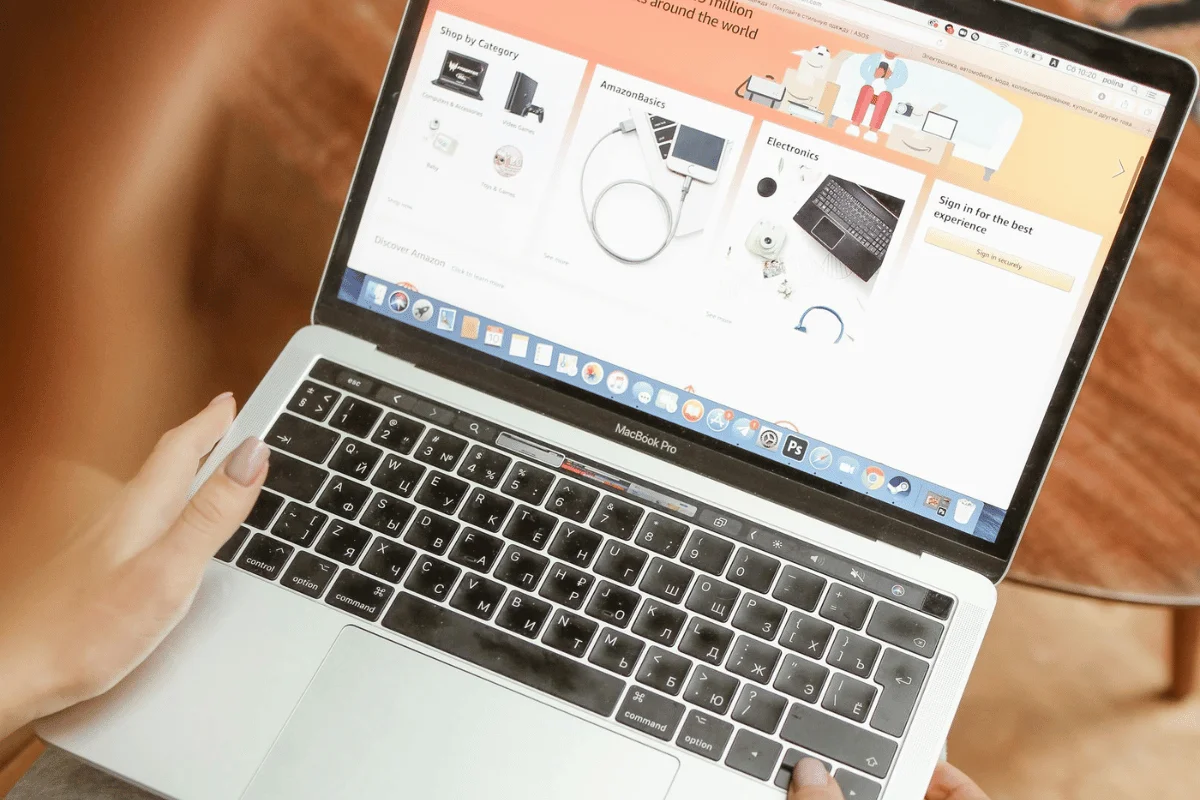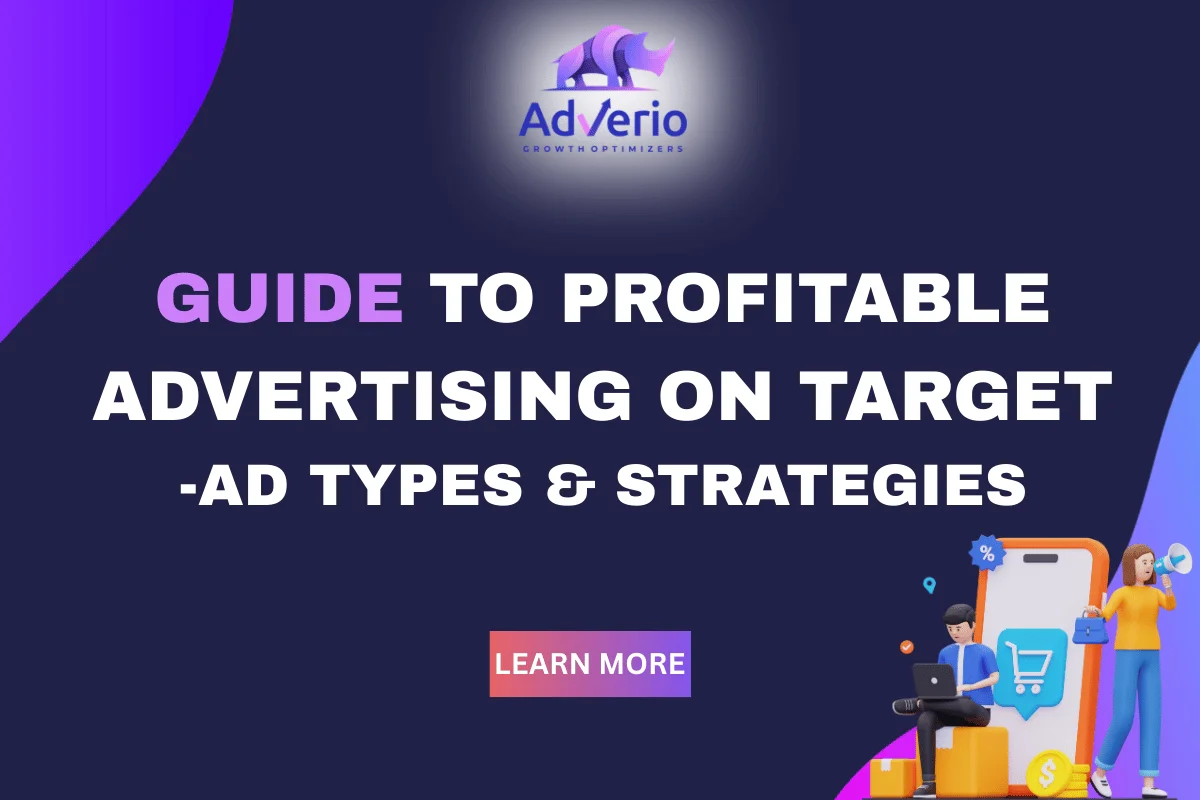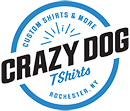Table of Contents
Target is among the largest general retailers globally, with an estimated $100+ billion in annual net sales.
However, it has one standout feature: sellers can only join the Target marketplace by invitation.
Merchants have the opportunity to grow exponentially on Target, given the platform’s exclusivity; however, you need a comprehensive advertising strategy.
This article covers everything you need to know about advertising on Target, including how Roundel works and the steps for launching a successful campaign.
TL;DR – How to Advertise on Target.com
Advertising on Target attracts more attention to your brand and products, creating opportunities for lead generation and conversions. Here’s a quick rundown of how to advertise on Target:
- Outline your campaign goals
- Set an advertising budget
- Set up the campaign
- Select Ad types
- Launch the Ads
- Track and optimize
Continue reading for an in-depth discussion of how to implement a winning Target advertising campaign for your brand.

Why Advertising on Target Is a Smart Growth Move
Advertising on Target works similarly to other retail platforms, such as Walmart or Amazon. It helps you get more eyeballs on your brand and products, boosting your sales and growth in the long term:
- Early Adopter Advantage: Merchants can only sell on Target following an invitation, which helps keep the number of brands on the platform low. This means sellers who advertise on Target face less competition for prime placements, gaining a higher impression share (SOV) at lower costs.
- Audience Targeting: You can target shoppers in various stages of the buyer journey, which helps increase conversion rates. For example, you could highlight your product’s unique value proposition on Search ads to entice shoppers to click on them.
- Increased Brand Credibility: Advertising your products on Target associates your brand with the retail giant, earning invaluable social proof for your business. This encourages shoppers to trust your company and order your products.
- Cross-Platform Reach: Target’s Roundel platform supports omnichannel advertising, which lets you promote your products to shoppers even outside the platform, including Google and Meta.
- Access to First-Party Data: Merchants gain advanced insights into shoppers’ behaviors and information, including their demographics and purchase history.
- Diverse Advertising Formats: Target supports various ad types, including Product Ads, Search Ads, Display Ads, and Programmatic Ads. This enables you to align ads with your marketing goals.

What Is Target Roundel and How Does It Work?
Target Roundel is a media company created to support sellers in reaching broader audiences and growing their sales volumes. It leverages ‘real-people’ data for insights into customer behavior and to create ads that meet shoppers at their point of need.
Roundel operates under the presumption that understanding what shoppers want now helps you anticipate the things they might need in the future. This creates a window of opportunity to create an experience that gives your target audience ‘joy,’ making them spend more on your products.
How Roundel Works…
Advertising on Roundel happens in three main steps:
- Data-Driven Audience Targeting: Upon registering with Roundel, you can tap into Target’s vast first-party data to understand your target shoppers, their demographics, and the best way to reach them.
- Creating Omni-Channel Ads: Next, vendors can create ad media and control where they are published, including on Target.com, the Target app, in-store screens, external sites, and social media.
- Conversion Tracking: Roundel provides holistic reporting on your ad’s performance, for effective ad-attribution and to identify media-influenced lead generation and conversions.

Target Ad Types and Placements
Target supports at least five distinct ad types that vendors could leverage to maximize their audience reach and conversions:
- Target Product Ads: Target offers product ads to vendors looking to promote their products or brands on its website and mobile app. The ads work just like on other retail platforms like Walmart and use the cost-per-click (CPC) model. As a seller, you’ll have control over your product ads, including choosing the products to promote and optimizing the ads in real-time to maximize impact.
- CTV Ads: Roundel partners with major streaming services and publishers, including Bloomberg Media, TLC, and Discovery, to display in-picture ads as shoppers watch their favorite shows. This has been a game-changer for vendors, as a recent report shows that 60% of Target guests look up products they see in video ads.
- Display Ads: You could leverage display ads to meet ideal customers ‘where they are.’ This means publishing your ads on pages that potential shoppers browse within the Target ecosystem and external sites. For example, you could pay for premium placement on Target’s home page or on popular websites like BuzzFeed and Vox.
- Programmatic Ads: Roundel enables vendors to reach shoppers on their preferred demand-side platforms through its Bullseye Marketplace, which brings together over 50 publishers. You can create custom audiences based on purchase history and then target each group with personalized ads tailored to their shopping behaviors.
- Search Ads: As the name suggests, these are ads that appear when shoppers search for items that relate to your product listings. Search ads offer higher conversion potential, as shoppers are typically already searching for similar products. You could place the ads as a banner at the top or within the promoted products section.
- YouTube Ads: According to a Target study, 94% of their guests watch YouTube regularly. As such, Roundel lets vendors display ads on YouTube In-Stream, In-Feed, and Shorts based on the target audience’s search data.
- Social Media Ads: Target lets vendors utilize its strong brand reputation to boost their visibility and credibility on popular social media platforms, including Facebook, Instagram, Pinterest, and Snapchat. Also, you can leverage Target’s first-party data to promote the social media ads only to users who are most likely to purchase your products.

How to Launch a Target Advertising Campaign
Target advertising extends beyond simply selecting a set of keywords to promote and then waiting for results. You must have a campaign strategy to ensure you advertise to the right Target guests at the right time, so every click counts.
1. Outline Your Campaign Goals
Identify what you want to achieve with your Target advertising campaign:
- Boost brand awareness
- Get more shoppers interested in a new product
- Increase conversions, both in-store and online
Pro tip: Use the SMART (specific, measurable, achievable, relevant, time-bound) framework when listing your goals so they are easy to track.
For example, you could aim to boost brand awareness by 30% over the next six months or increase sales (conversion) by 10% every quarter.
2. Set an Advertising Budget
Decide how much you want to spend on your Target advertising campaign, as this guides your campaign scale and bidding strategy.
For example, Sponsored Product Ads uses the CPC model, so you need to establish how many clicks you will target daily. In contrast, programmatic ads often use the CPM model, so the cost depends on the number of impressions.
3. Set Up the Campaign
This is the most complex step, as your advertising strategy could make or break your campaign. Start by identifying the products you want to promote.
For example, you could target seasonal products as you build up to forthcoming holidays, such as Halloween or Thanksgiving.
Create a new campaign on Target Roundel and add the chosen products. The campaigns can be structured around product categories, seasonal promotions, or marketing goals.

4. Select Ad Types
Next, select your preferred ad types depending on the campaign goals you identified in step 1:
- Sponsored Product Ads: Launch a new product or target high-intent shoppers searching for specific categories
- Display Ads: Boost brand awareness
- Programmatic Ads: Run upper-funnel campaigns to attract new customers
- In-Store Digital Ads: Influence last-minute purchase decisions
5. Launch the Ads
Once all the ads are ready and the copies refined, it is time to go live. Usually, the ads appear within a day or two, depending on the ad type and placement.
For example, shoppers may see your display ads within 24 hours of going live, while programmatic ads may take a few days to appear, as they must be exported to external sites.
6. Track and Optimize
Monitor your campaign’s performance on your Roundel dashboard or other third-party tools. Track essential metrics to assess the campaign’s engagement and expected ROI. Examples include:
- ROAS: Return on Ad Spend measures the generated revenue for every dollar spent on advertising.
- Impressions: How often your ad is shown to potential customers.
- CTR: Click-Through Rate tracks the number of people who clicked on your ad as a percentage of the ad impressions. You can then use our click-through rate calculator to compare how your brand performs against your competitors.
- Sales Conversions: Percentage of shoppers who completed a desired action (placed an order or purchased your product) after clicking on your ad.
- Target Share of Voice: SOV analysis helps track a brand’s visibility within Target’s advertising ecosystem. One way to measure SOV is by determining the percentage of ad impressions that your product or brand captures on Target’s media channels.
Leverage the insights from your campaign performance to refine your advertising strategy and increase your sales. Suppose search ads generate more clicks and conversions than Sponsored Products Ads. In that case, allocate additional resources to search ads and monitor for a proportional increase in ROAS.

Common Challenges in Advertising on Target
Below are common challenges you might encounter when promoting your brand or products on Target:
- Target’s Strict Advertising Standards: Sellers can’t simply repurpose their ad copies and use them on Target unless they meet the platform’s creative fit standards on fonts, colors, imagery, and messaging. This means brands may incur additional costs to hire a creative team.
- Steep Learning Curve: The Roundel dashboard can be complex for a first-time user, which reduces your ability to utilize the platform effectively.
- Minimum Spend Threshold: Target has a high minimum ad spend requirement, which often locks out smaller businesses with tight marketing budgets.
- Limited Control Over Ad Placement: Target often has the ‘final say’ on which ads appear on its ecosystem, especially Roundel. This often makes it difficult for sellers to control when and where their ads appear on the platform.

Working with Experts to Optimize Target Advertising
Advertising on Target takes more than just selecting the keywords to optimize and allocating a budget. You must choose the right Target ad types and personalize the ads to the products you want to promote.
Your best bet? Partnering with a Target advertising agency.
At Adverio, we offer various services to help sellers implement Target advertising roadmaps and campaigns that turn passive shoppers into loyal clients:
- Target PPC Management: We leverage Target’s world-class customer data to help you meet your ideal shoppers at various points of their user journeys through clickable ads.
- Target Account Management: We handle the administrative tasks associated with advertising on Target’s Roundel, allowing you to focus on processing your client orders.
- Target Catalog Optimization: We’ll help you optimize your product catalog, so it appears in relevant searches, increasing visibility to high-intent shoppers.
- Target Review Syndication: We’ll help you export your customer testimonials to other platforms to boost your brand visibility and attract new customers to your store.
Ready to generate more clicks for your Target store and turn the visits into dollars?
At Adverio, we help 7 and 8-figure businesses stuck in plateaued growth to optimize their product catalogs and target potential leads with precision ads to increase sales. You will receive a dedicated account management team with a proven track record of delivering 186% YoY growth and 7-figure scale-up results for other clients.
Take the first step. 👉 Book your ROI forecast. →

Frequently Asked Questions (FAQs)
This section answers commonly asked questions about advertising on Target.
Can I Advertise Both Online and In-Store at Target?
Yes. You can advertise both online and in-store at Target. Usually, Target prioritizes its online platforms (Target.com and the Target app) for advertising. However, you could leverage in-store displays and point-of-purchase (POP) ads to nudge shoppers to purchase your products.
How Long Does It Take to See Results From Target Ads?
There’s no specific timeline on how long it takes to see results from Target ads, as it depends on your marketing goals. For example, you might notice increased brand visibility and impressions within a few weeks of paying for the ads. However, it might take several months to realize increased sales volumes.
Are Target Roundel Ads Worth It for Smaller Brands?
Yes. Target Roundel ads are worth it for smaller brands, as they provide access to first-party data to help them target their ideal consumers. Also, Roundel gives you access to premium placements within the Target ecosystem, boosting your brand visibility quickly.
Conclusion
Advertising on Target lets you attract new shoppers to your products, while still maintaining brand memorability to existing customers. Target Roundel enables sellers to leverage its omnichannel ecosystem, reaching potential shoppers both within and outside the platform.
However, you need to work with a Target advertising agency to help you optimize your ads and maximize your ROI.
We at Adverio have 10+ years of experience helping brands grow exponentially on Target, with a client even experiencing a revenue growth of 1,424% over a 51-month period.
Take charge of your Target advertising campaign. Demand real ROI.




























